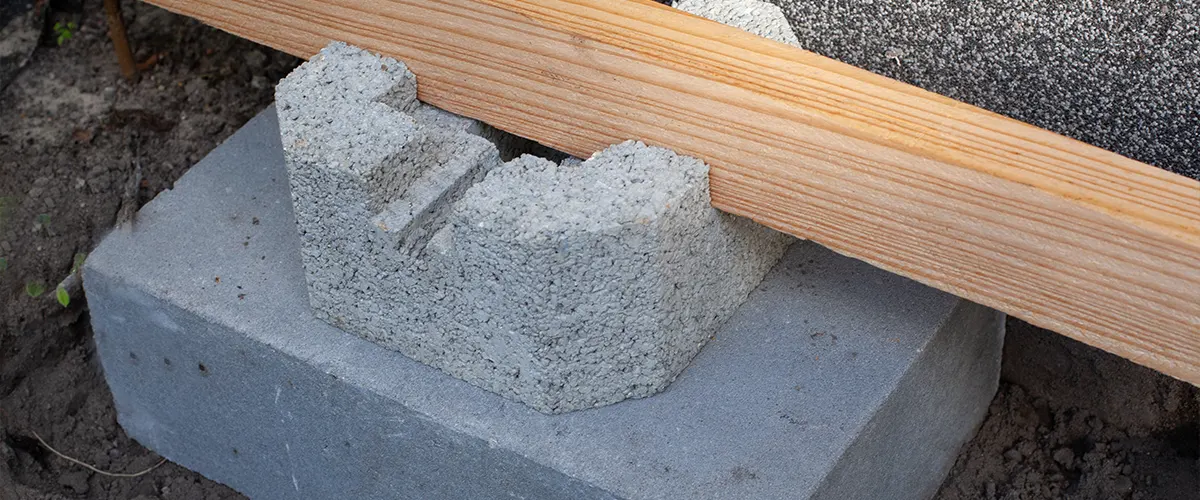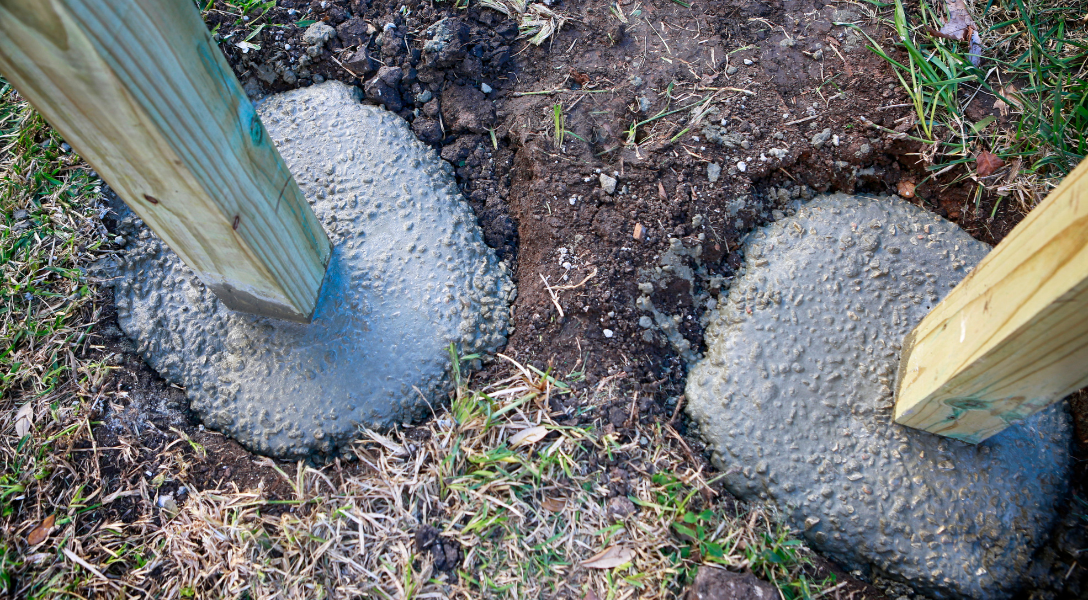Important Tips for Solid Deck Ground: A Comprehensive Guide
Welcome to "Vital Tips for Solid Deck Ground: A Comprehensive Overview." In this extensive overview, we will certainly give you with the important expertise and methods to make certain a solid and secure structure for your deck. Constructing a deck is an investment that needs careful preparation and focus to information, especially when it involves the ground. This guide will certainly cover critical elements such as selecting the appropriate products, assessing dirt problems, calculating lots capability, identifying correct footing depth, and attaining accurate installment. By complying with these suggestions, you will be equipped with the essential details to construct a deck that not just boosts your outdoor room but additionally stands the test of time. Allow's dive right into the world of strong deck footing and establish a foundation you can depend on.
Choosing the Right Deck Ground Products
When choosing the best deck ground products, it is vital to take into consideration the specific needs and demands of your task. The quality and longevity of the footings directly influence the security and longevity of the deck framework. There are several aspects to take into consideration when picking deck footing materials.
Clay soils tend to keep water, while sandy soils drain pipes promptly. Recognizing your dirt problems will help you choose footings that can properly sustain the weight of the deck and protect against concerns such as heaving or sinking - Deck Footings.
Severe temperatures, dampness levels, and freeze-thaw cycles can influence the performance of deck grounds. In such situations, using frost-resistant products or installing grounds below the frost line can aid reduce these threats.
Furthermore, the dimension and style of your deck need to likewise affect your option of footing products. Larger or more intricate decks may call for deeper or enhanced footings to make certain sufficient assistance. Recognizing the particular lots requirements of your deck will certainly aid you figure out the appropriate products to utilize.
Inevitably, choosing the right deck footing products includes mindful consideration of aspects such as soil problems, climate, and deck layout. By taking these aspects into account, you can pick grounds that provide the necessary assistance, improve the stability of your deck, and guarantee its longevity.
Properly Examining Soil Problems
To correctly assess soil problems for your deck footing, it is essential to extensively evaluate the load-bearing abilities and drainage properties of the dirt in your location. Recognizing the dirt's ability to birth weight and its capability to drain pipes excess water will certainly help guarantee the security and long life of your deck.
When assessing the load-bearing capacity of the dirt, it is necessary to consider elements such as soil density, type, and compaction. Various dirt kinds have varying load-bearing capabilities, with compacted soils generally offering better support than loosened or sandy soils. Carrying out a soil test can give beneficial details concerning the dirt's capability to support the weight of your deck.
Additionally, assessing the drain properties of the dirt is necessary to stop water buildup and possible damage to your deck - Deck Footings. Poor drainage can result in moisture buildup, which can weaken the foundation and create architectural concerns. It is vital to analyze the dirt's capacity to drain pipes water successfully to prevent these problems
Consulting with a professional engineer or soil expert can greatly aid in appropriately examining dirt problems for your deck footing. They can supply professional advice and advice, guaranteeing that you pick the suitable footing style and products based on the details qualities of the dirt in your area. Taking the time to completely analyze soil problems will aid you build a strong and resilient deck.
Determining Load Capability for Grounds
One essential action in ensuring the stability of your deck is to properly compute the load capability for your grounds. Deck Footings. The load capability describes the optimum amount of weight or tons that the grounds can safely support without triggering go to this website any structural damages or failure. Computing the load capability for grounds involves taking into consideration various aspects such as the dimension and kind of footings, the kind of soil, the dimensions and weight of the deck, and the real-time tons and dead lots that the deck will certainly go through
To calculate the load capability, it is necessary to consult regional building ordinance and guidelines as they provide certain guidelines and demands for deck construction. These codes think about elements such as dirt bearing capability, frost deepness, and minimum ground measurements. Additionally, it is crucial to involve the solutions of a professional contractor or an architectural engineer that can carry out the essential computations and evaluations to make certain the safety and security of the deck.
When determining the tons capacity, it is necessary to properly figure out the live tons and dead tons that the deck will experience. The live lots describes the weight of people, furniture, and any kind of various other products that will be placed on the deck, while the dead lots describes the weight of the deck itself. By precisely identifying these loads and considering all pertinent elements, you can ensure that your grounds are adequately created to support the weight and maintain the security of your deck.
Guaranteeing Proper Ground Depth
Correct ground depth is critical for making sure the stability and long life of your deck. The depth at which the grounds are set up straight impacts the structural stability of the deck, as it determines just how have a peek here well the footings can stand up to the forces put in by the deck and the soil underneath it.
When identifying the appropriate ground deepness, a number of factors need to be considered. These consist of the type of soil, the neighborhood climate, and the tons capacity required for the deck. Usually, footings must be positioned below the frost line to stop any heaving or changing due to freezing and thawing cycles. In locations with expansive clay soil, much deeper grounds may be essential to provide appropriate assistance.
To establish the proper footing depth, it is advised to talk to a structural engineer or building assessor who can examine the details conditions of your site and give assistance based upon local structure codes and policies. They will take into consideration factors such as soil structure, water table level, and expected tons to establish the minimum needed ground depth.
Setting Up Grounds With Precision
Installing footings with accuracy is essential for ensuring the stability and architectural honesty of your deck. Effectively mounted grounds offer a solid structure, making certain that your deck can stand up to the weight of furniture, individuals, and various other tons. To install grounds with accuracy, there are a number of key actions to adhere to.
Firstly, it is important to properly note the location of each footing. This can be done by using a string or chalk line to create a clear synopsis. By gauging and marking the exact placements, you can guarantee that the grounds are uniformly spaced and aligned.
Following, you need to dig the openings for the footings. It is critical to dig them to the right deepness and diameter, as specified by regional building codes and guidelines. This will supply adequate assistance and prevent the deck from shifting or sinking gradually.
Once the openings are dug, it is important to degree and portable the soil at the end of each hole. This will certainly develop a steady base for the ground to sit on and protect against any settling or activity.
After preparing the holes, you can proceed with putting the concrete. Use a concrete mix that appropriates for grounds and follow the maker's instructions for pouring and blending. Ensure that the concrete fills up the openings completely and is level with the ground surface area.
Lastly, enable the concrete to heal correctly prior to continuing with the construction of your deck. This will make sure that the grounds are solid and stable, supplying a secure foundation for your deck.

Final Thought
Finally, guaranteeing solid deck ground is critical for the security and durability of a deck structure. By choosing the appropriate ground products, evaluating soil problems, computing tons capacity, and click here to find out more mounting grounds with precision, the risk of architectural failure can be minimized. Adhering to these crucial ideas will help develop a strong structure for any type of deck project.
Understanding your dirt conditions will certainly assist you choose grounds that can efficiently sustain the weight of the deck and stop issues such as sinking or heaving.
Consulting with a specialist engineer or dirt professional can greatly help in correctly analyzing dirt conditions for your deck ground. Calculating the tons capacity for grounds involves taking into consideration different factors such as the dimension and type of grounds, the type of dirt, the dimensions and weight of the deck, and the online load and dead tons that the deck will be subjected to.
